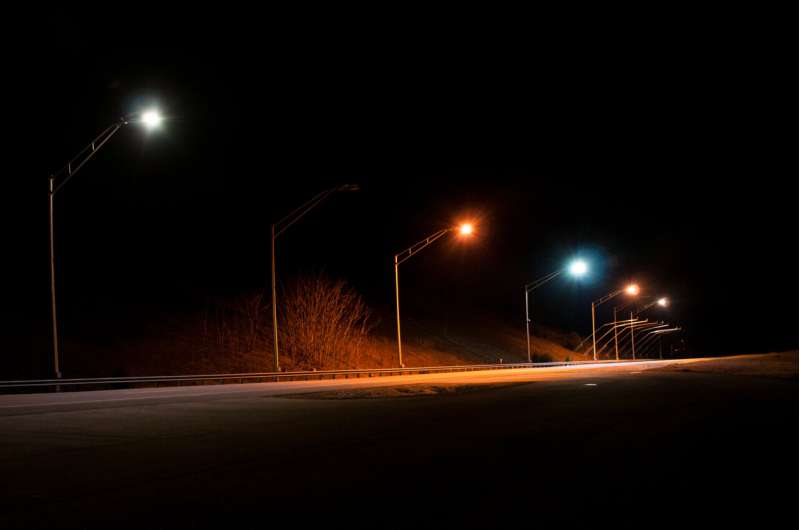This article has been reviewed according to Science X's editorial process and policies. Editors have highlighted the following attributes while ensuring the content's credibility:
fact-checked
trusted source
proofread
Researchers remove uncertainty in question of roadway lighting impacts on human health

New research from the Virginia Tech Transportation Institute is shining a light on lighting uncertainties.
The groundbreaking research conducted at the Virginia Tech Transportation Institute (VTTI) found that blue light from LED road lighting does not have any significant impact on road user salivary melatonin levels.
Ron Gibbons and Rajaram Bhagavathula in collaboration with neuroendocrine researchers, George Brainard and John Hanifin from Thomas Jefferson University, were the first to conduct this kind of research on a realistic road environment in a study sponsored by the Department of Energy. By using the extensive capabilities of the Virginia Smart Roads, they were able to conduct their study with three participant groups to the specifications of current roads and lighting scenarios, earning their research a spot in the Clocks & Sleep journal.
"This is the first time that research like this has ever been done in a naturalistic environment," said Gibbons, program leader of the infrastructure-based safety systems group at VTTI. "It has allowed us to remove a point of uncertainty with lighting research."
LED lights help to brighten the roads, save more energy, and last longer than traditional yellowish orange high pressure sodium (HPS) lights, but the American Medical Association was concerned about the blue light having a negative impact on humans. Specifically, the association was concerned with visual impairment due to stray light and the disruptive impact that lighting can have on the environment and human circadian rhythms.
The majority of existing research on this topic comes from controlled laboratory experiments. For this study, the team tested the impact of roadway lighting on melatonin in vehicle drivers, pedestrians, and individuals in a bedroom close to the roadway. These experiments were performed in a naturalistic environment to simulate as close to a naturally occurring event as possible.
The Virginia Smart Roads are a complex network of four test beds that recreate every day driving conditions seen around the country. Using this to enhance its research, the team planned out a system of tests that replicate everyday scenarios. This included utilizing the highway portion of the Virginia Smart Roads due to its extensive lighting system that can replicate more than 95% of the lighting across national highway systems and because of its similarities to a real highway.
The team set up three testing scenarios. Pedestrian participants were asked to sit in a space next to the road. Participants in the vehicle were asked to drive along the highway portion of the Virginia Smart Roads underneath the roadway lighting. The final group of participants, located inside a simulated bedroom installed on the side of the road, were asked to sleep in a bed by a window to collect data on light trespass. Saliva samples were collected at regular intervals and then analyzed against a control to see if melatonin levels had increased or decreased after light exposure.
What Gibbons and Bhagavathula found was that compared to no roadway lighting, and HPS lighting, LED lighting did not impact salivary melatonin levels in participants. Safety, energy, health, light pollution, environmental impacts, and user preferences are all topics of concern when it comes to LED lighting. With their findings, they were able to help eliminate one major concern of potential impacts on human health.
While this project focused specifically on the impacts of LED lighting on salivary melatonin levels in participants, the team is continuously conducting lighting research that is saving lives, time, money, and protecting the environment.
More information: Ronald B. Gibbons et al, Impact of Solid State Roadway Lighting on Melatonin in Humans, Clocks & Sleep (2022). DOI: 10.3390/clockssleep4040049





















